Buying the WAN of the Future
It's new, but it's not rocket science!
After two decades of going to market to buy essentially the same MPLS WAN, the world has now changed.There are new technologies, new vendors, new engagement models and new consumption models to be considered.
The benefits can simply be summed up as greater performance, flexibility and control at a substantially lower cost. We delved in to how other Global WAN buyers are benefiting from disruptive technology here.
Going to market this time is an opportunity to set your organization up for the next decade and beyond. There’s a bit to do, some of it is different to the last sourcing process, but don’t be daunted as it is not that difficult. Here are some considerations that might help you set the WAN review up for success.
Latest industry metrics
Approximately four years after its commercial launch, SD-WAN (Software-Defined Wide Area Network) has become the new standard in WAN technology. Literally scores of vendors have emerged with varying capabilities and most telcos have partnered with one or more SD-WAN technology suppliers to offer a diversity of solutions. At first glance it is a confusing market to survey.
Analysts predict that the SD-WAN market will continue to grow aggressively, and latest market reviews estimate:
- This rapidly evolving segment of the networking market will grow at a 40.4% compound annual growth rate from 2017 to 2022 to reach $4.5 billion, according to IDC
- We have seen over 60 SD-WAN vendors in the market
- By 2023, 50% of all WAN edge routers will have been replaced by modern WAN edge solutions such as SD-WAN, according to Gartner
Gartner recently benchmarked the top 20 providers across a range of use cases and enterprise sizes. The ranking ten vendors they selected by average score are shown in the table below:
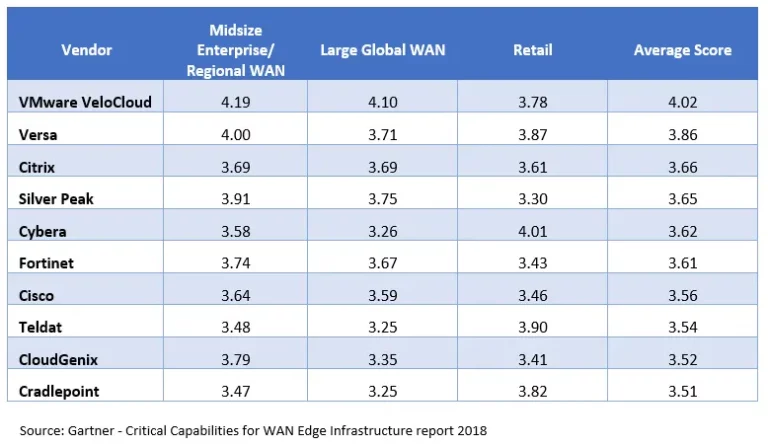
Why should I move to SD-WAN?
With so many vendor voices out there, often with different interpretations on key terms like SD-WAN biased towards a particular feature they possess or legacy positioning they have enjoyed, it is easy to get drawn down time consuming rabbit holes. It is crucial you retain a clear focus on the specific areas for improvement you have to deliver.
The drivers for migration to SD-WAN tend to be a simple summation of the limitations of traditional WANs. The diagram below charts survey results of what IT managers see as their biggest issues to overcome at the WAN edge. Prioritize these goals specifically for your environment.
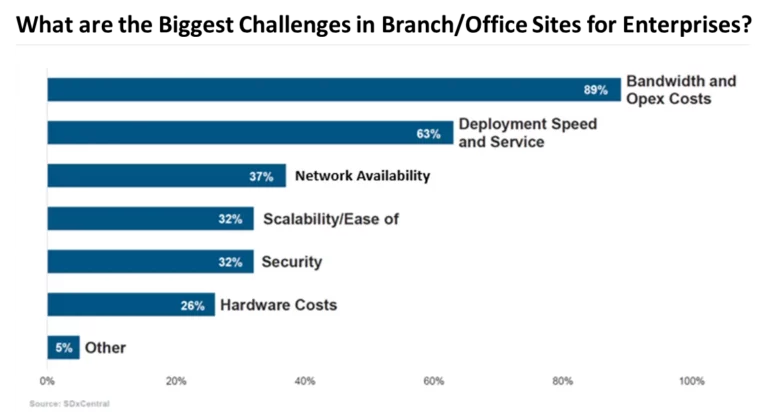
How do I get started on the SD-WAN path?
Adopting new technology can always be a challenge but there are two key things you need to do to simplify the process:
- Engage the business in the selection and planning process
- De-risk the transition
Engaging the Business
Migration to new WAN technologies like SD-WAN can bring drastic improvements to an organization but also some significant change so it’s important to:
- Understand current limitations and frustrations
- Articulate the benefits the new technology can bring and how it will fix current issues
Some key area to focus on are:
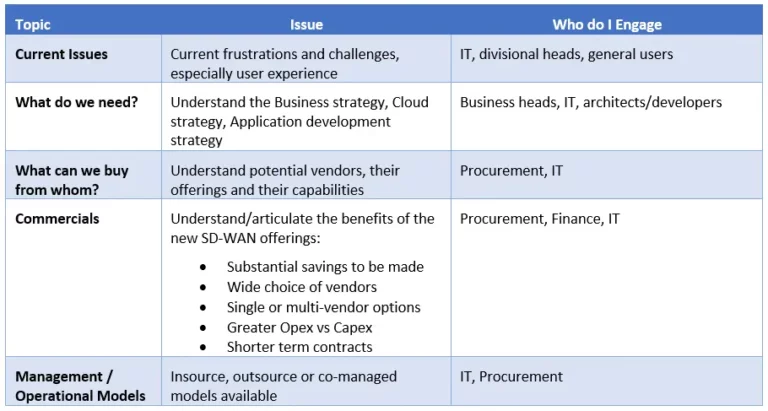
Our CTO Ciaran Roche provides some great insights into distinguishing the benefits of the telco vs non-telco delivered SD-WAN here.
De-risking The Transition
One of the greatest ways to achieve success in migrating to new technology is to provide visibility of the selection and planning process and to explain what you are doing and why.
SD-WAN as a relatively new technology is no different and this is reflected in the common concerns. The table below illustrates questions we are commonly asked and ways these can be addressed.
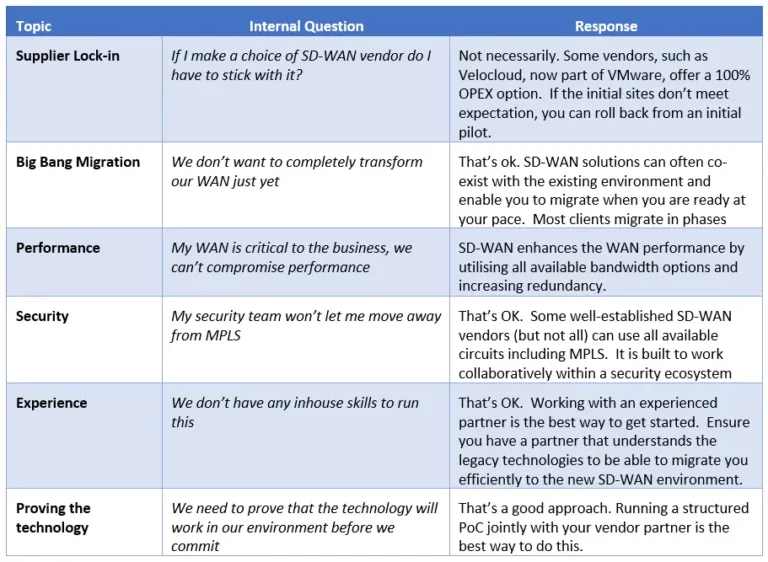
Also, ensure you utilize vendors assets as well: speak with reference customers, get a copy and an explanation of the technology roadmap and ask for access to user groups.
Through open engagement of the business and following a transparent process, we have seen our clients achieve commonality of focus within their organisations where sometimes it had been adversarial.
What are the outcomes?
Our clients have achieved great technical, commercial and operational outcomes through their adoption of SD-WAN. Here are just a few examples but the key point is that unlike the early adopter phase a couple of years ago, now you can find industry peers and relevant other examples who have real-world experience of a material depth and scale. We are always happy to introduce early adopter experience to those just embarking on the journey.
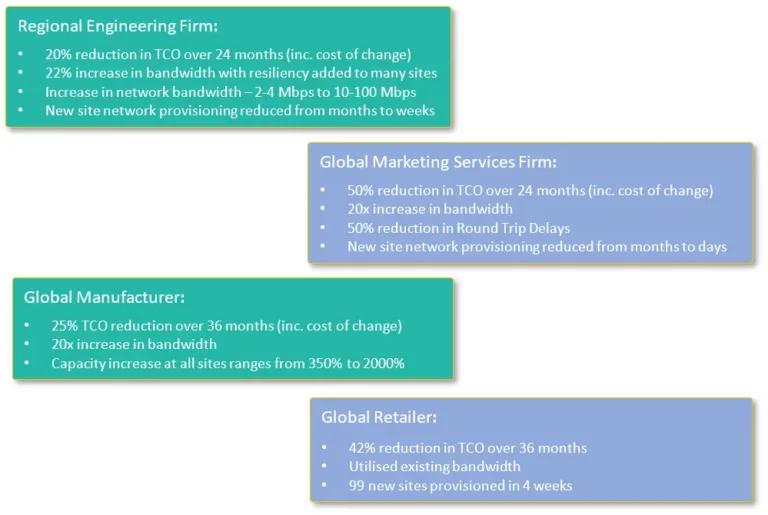
So if you were thinking of dusting off your old MPLS RFP to go to market this time, think again.
Invest the time, engage the business, understand what your requirements for the cloud/mobile future really are, engage the market to understand what your options are then home in on the best technology and partner for you. The results speak for themselves and your users will thank you for years to come.
Stay tuned for our next article in this series, which will explore some of the additional technical considerations that can apply to the various SD-WAN sourcing models.
Need some assistance? For a high-level overview and advice on your options, Coevolve can help.